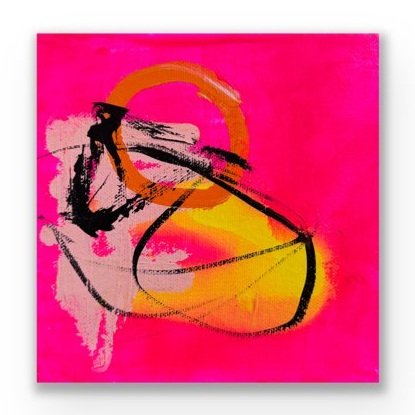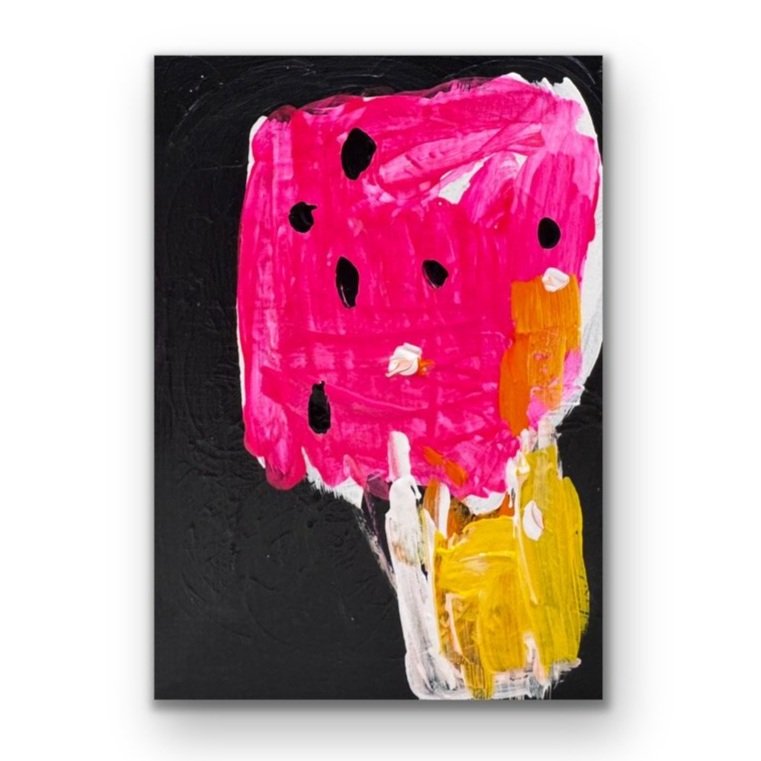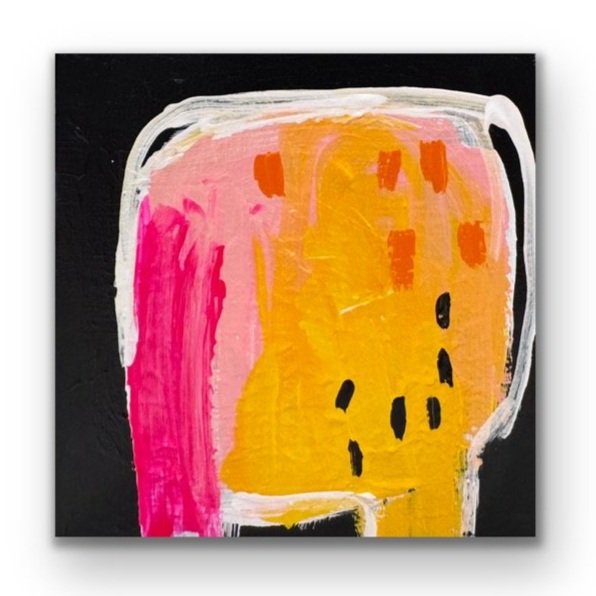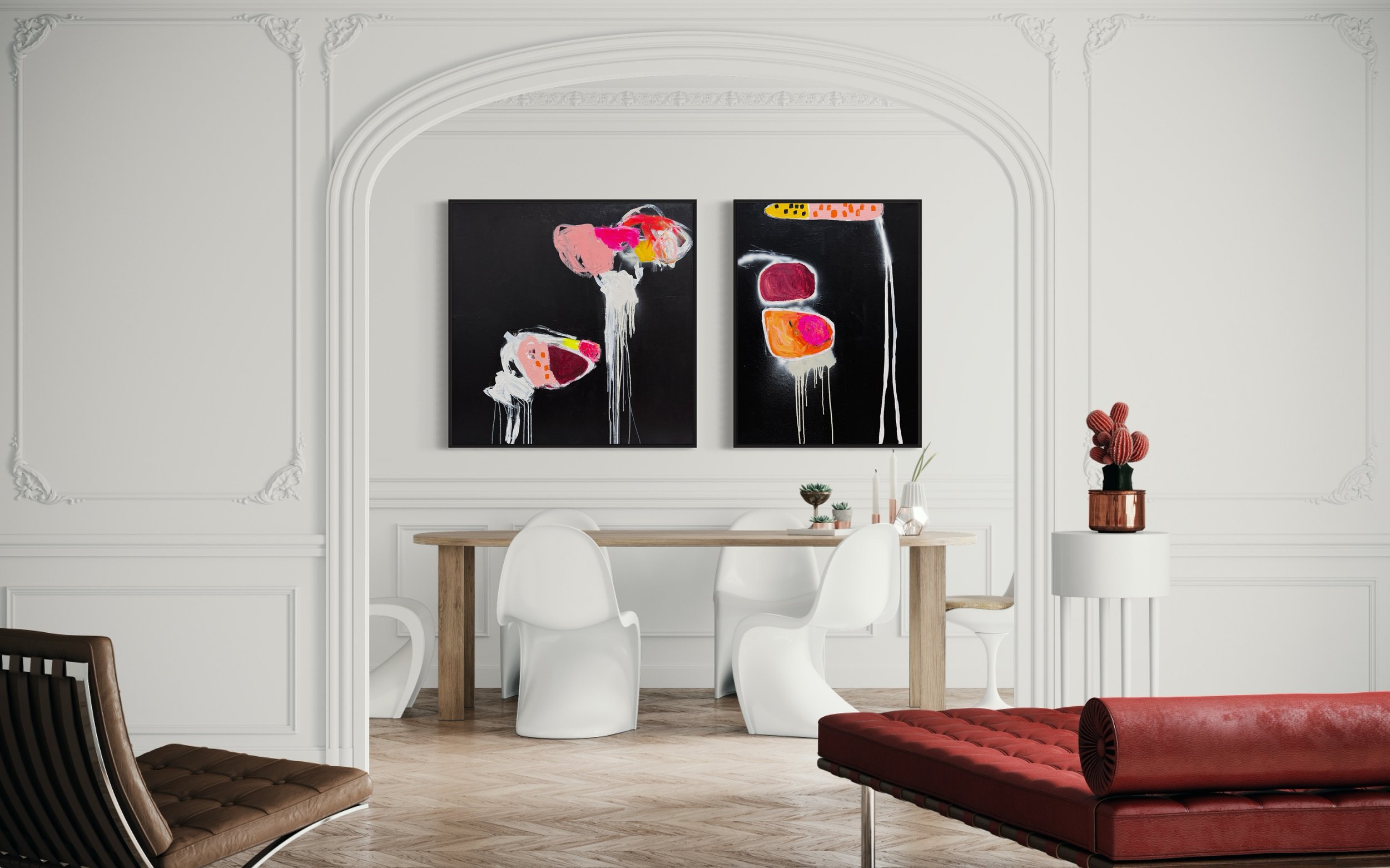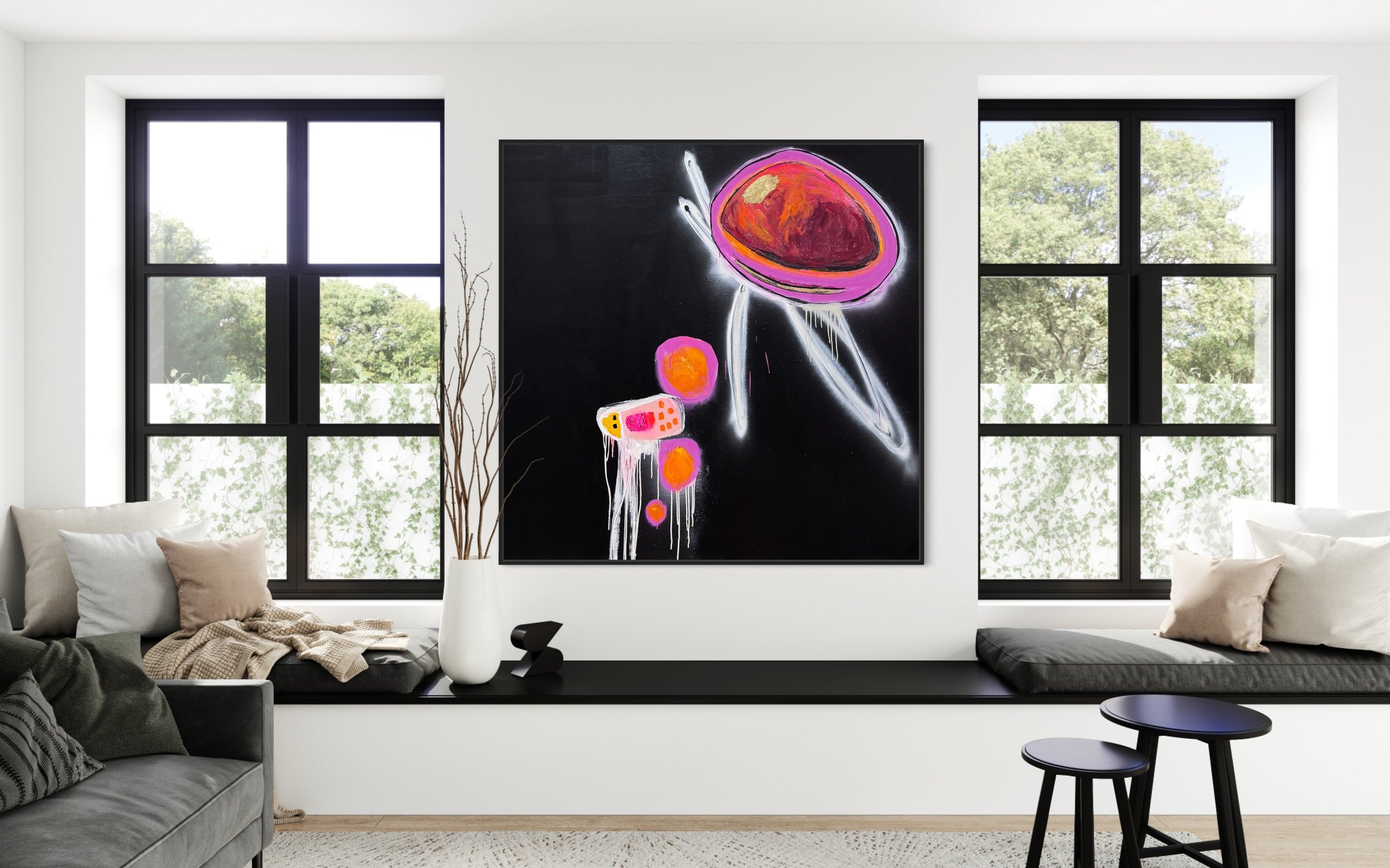Small Business Spotlight
PALAIS WITH megan gonyo
“The world needs more artists”
About MEGAN GONYO
Megan Gonyo is a contemporary painter whose fluid, vivid paintings grace Four Seasons Private Residences Minneapolis. In addition, she is a multi-passionate entrepreneur who runs and operates her two artist brands, Megan Gonyo Fine Art and Palais. Her work grapples with how our brains can be re-wired, how we perceive the world, and how art can create a deeper relationship with ones self-perception. She can be found online on megangonyo.com and on Instagram at @megangonyoart and @palais.fashion
Below, Megan speaks with us about how sensory memories inspire her work, how she approaches commissions, and why she encourages people to “shop bad art”.
Q & A with MEGAN GONYO
You have two brands- Megan Gonyo and Palais. Palais cheekily encourages your clients to “Shop Bad Art”. Would you speak to the difference between the two brands, and what exactly is "Bad Art"?
Yes! I ended up with two brands as a result of both years of experimentation and trying to fit in at the same time. The art industry is difficult to navigate - on the one hand, it’s supposed to be this place that encourages freedom of expression and creativity, but it also has a history of tradition and if you don’t exactly fit within the boundaries of that tradition, you might not be taken seriously.
Palais is the revised version of Palette Champagne, which is the brand I created back in 2016 to represent my French family history and the golden hues of the landscapes I painted at the time. But when I started selling my art in 2020, that name confused the social media algorithms which rejected my ad spend 100% of the time; reason cited? Selling alcohol on Instagram is against policy. (If you just did a double take, I did too, the first time I got that message.)
As my audience grew, however, so too did my network and the number of real estate and design projects I took on. Recognizing that maybe I needed to be more “serious” and discoverable to clients and business partners alike, Megan Gonyo is the brand I use now to represent high-value art and creative services.
Palais still speaks to me though, and it is over here where I can play. I decided to re-purpose Palais into a brand that not only takes on the years-long traditions of the art industry by using a pseudonym, but it’s a brand that also challenges the modern definition of art.
Art has become so broadly defined that it has lost its value among the majority.
This happened because a lot of people who had the same idea as me - namely, to make art more accessible and less stuffy - ended up taking it to the extreme with the over commercialization of it. Crate & Barrel keeps artists poor.
(Defendants of the aforementioned traditions might have had a point).
All this to say, Palais is taking a stance against bad art by denying that commercialized art is art at all. Rick Rubin, Co-founder of Def Jam Recordings and author of “The Creative Act”, backs me up on this. He says that “if you make something and everybody likes it, chances are you haven’t gone far enough. The best work divides the audience. People love it and people hate it. Otherwise, it doesn’t have a strong enough charge.”
It is the commercialization of art that necessarily makes art appealing to the masses. More specifically, it is the removal of the thing that divides the audience. Therefore, commercialized art is not art.
Adhering to this theme is the essence of the Palais brand. “Bad Art” is so bad (to some people) that it is, by definition, good.
Your role is both as a producing agent and as a business owner. How do you balance the creativity and freedom needed to paint, and the pragmatism to make savvy business decisions?
This is a great question because you’re right, it is definitely a balance! The producing agent part requires alone time so that I can get into my creative flow state. But the business part necessarily means that I’m talking to clients, prospecting, or otherwise marketing to my audience which is a different type of energy.
What helps me the most is that I’ve learned to recognize that there is a finite amount of hours in each week and I have to be ok with the fact that I only open up my studio by appointment or special event, rather than, for example, hold regular retail hours. The most successful business owners focus on only the few things that impact the bottom line the most, whereas amateurs do all the little things that end up just being busy work, eventually leading to burnout.
So it’s a combination of knowing which type of activities produce the most benefit, and then being mindful of how I use my time to ensure that most of it goes towards that type of activity. The reason why I allocate more time to the production side is because I believe that if you show your work - meaning, you show your creative process or let people see the “behind the scenes” and give them insight into the passion that drives the creation, then the business part is a lot easier because you are taking people on a journey.
And especially with art, the experience is what buyers are attracted to more than anything else.
You have had your work commissioned for Four Seasons Minneapolis Private Residences. What is the process like for creating a commissioned piece versus a piece that you are creating to sell on the market?
The biggest difference between a commissioned piece versus a piece that I’m creating to sell on the market is the process of discovery that happens before the brush even touches the canvas. I am an intuitive painter most of the time, which means that for pieces I’m creating for me - which then become the pieces to sell on the market - start with very little planning. I might generally know what color palette I want to use or have a theme in mind, but other than that, I let the brush and the experience in the moment guide me.
But for a commissioned piece, there is much more time built into the discovery phase. The discovery phase includes conversations with the client to understand who they are, what their goals are for the artwork and the space it will live in, and any research that needs to be done to draw upon inspiration from time periods, design styles, or even geography as elements to bring into the final work. I write up a design brief, and upon the client’s acceptance, I paint. But even the painting phase is not as free-flowing as it usually is, because now I am following a plan. This is why commissioned pieces are more elaborate and time-consuming, and it’s why I cannot always accept every request. But, the finished pieces are special because they are collaborative. Namely, the client has a stronger emotional connection to the final work because he or she was a co-creator.
Finally, what are your foundational inspirations, and where are you currently drawing your artistic well from?
My inspiration comes from everywhere! I have always experienced the world a little differently than some people, but I didn’t really know that until those people grew increasingly annoyed with my need to stop every few minutes along a walk to take a photo of something, for example, or for spending too much time sitting at a cafe somewhere just taking in all of the sights and sounds. It’s an almost subconscious decision to constantly process a lot of different sensory inputs of an experience and store them away for later, not really knowing when or if they will become useful.
While in the studio painting, I access those stored memories through bits of information that trigger the other related pieces of information to become more vivid.
For those more mathematically inclined, the best way I can describe it is like how a primary key works. A subset of attributes is used to retrieve the full set of attributes of a unique record, and this is so that the full string of attributes can be stored somewhere else (for security purposes as it relates to a database, and for memory storage efficiency purposes as it relates to the human brain).
As an example of how it plays out, listening to a particular song might trigger a memory of a location, which then might trigger a memory of a scent, which then might trigger a memory of a feeling, so on and so forth. It is all of those things together that unfolds into a unique experience during the creative process.


